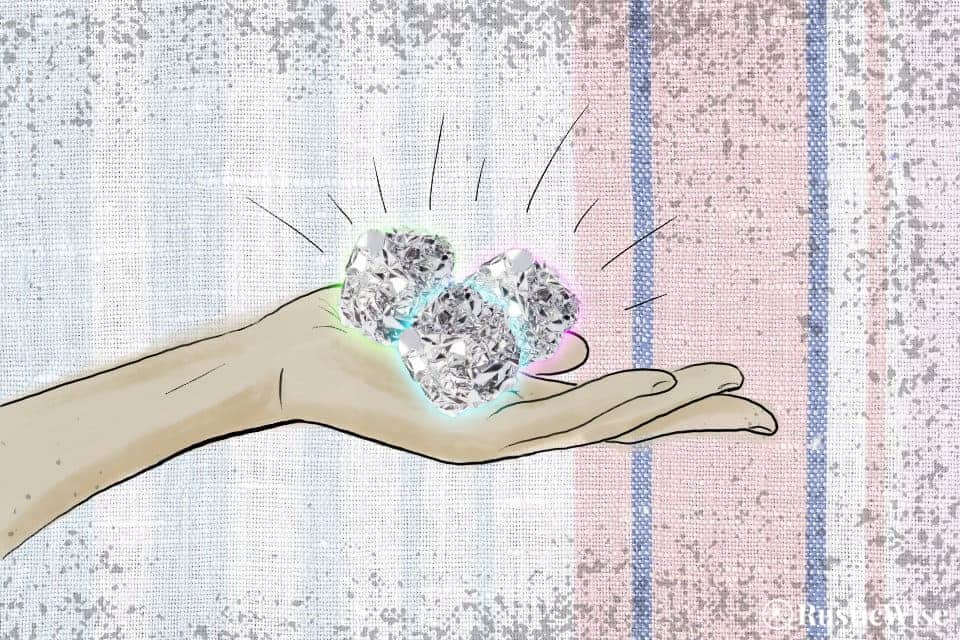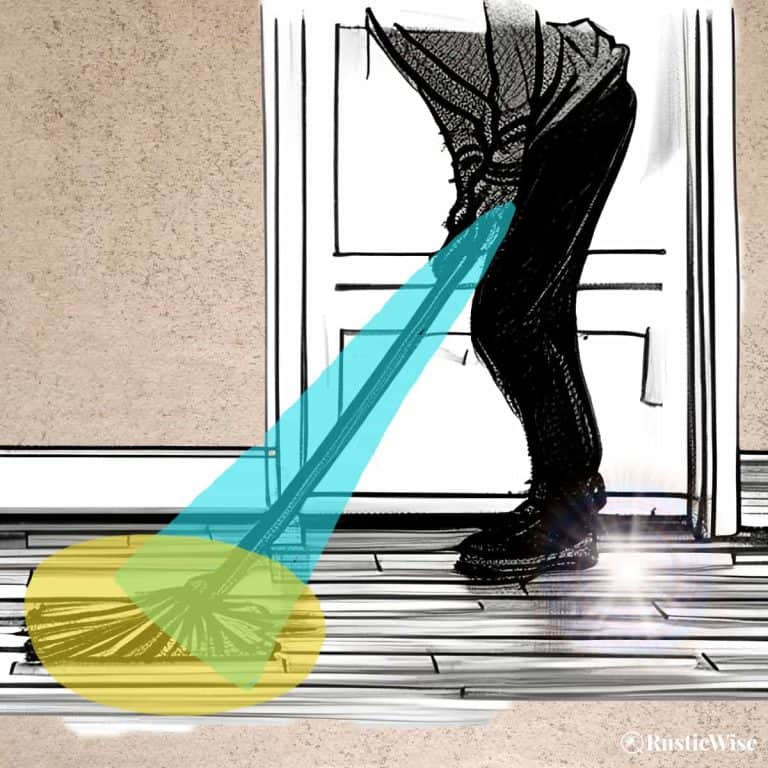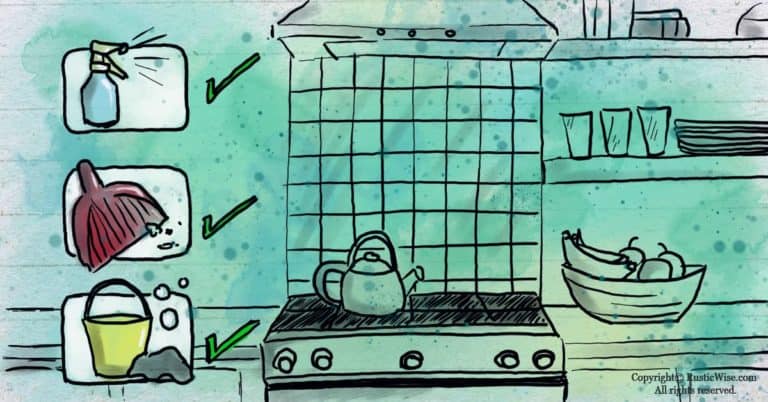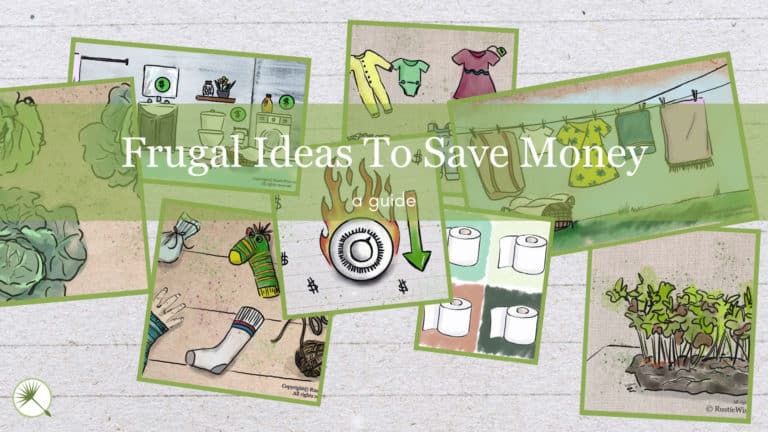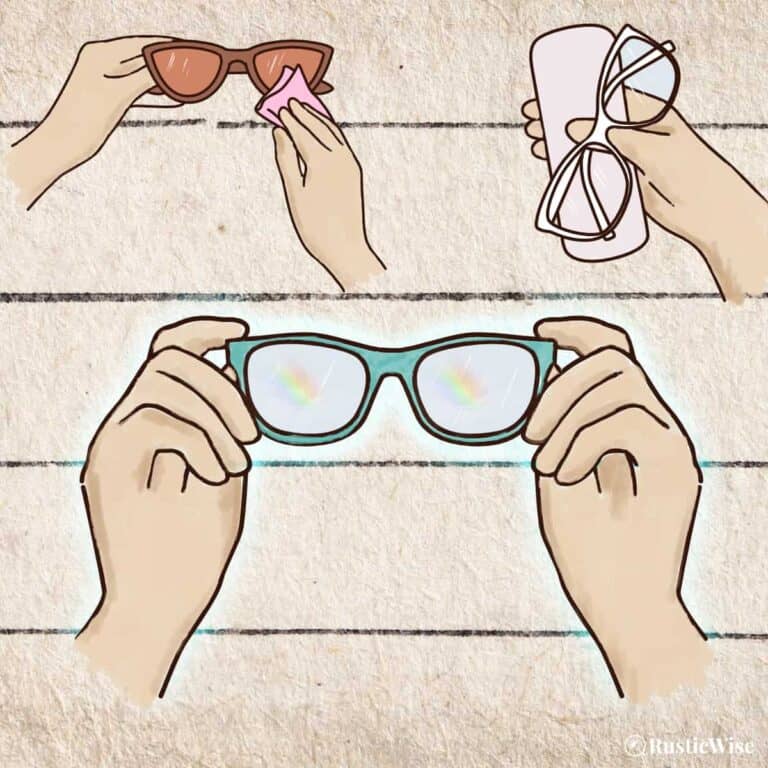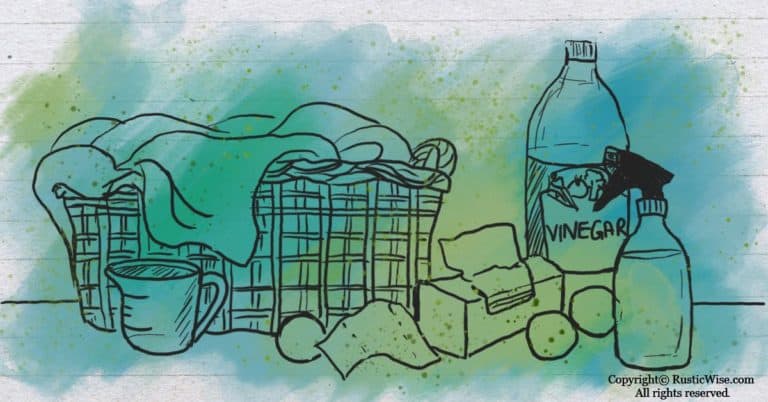Why Put Aluminum Foil in the Dryer? 4 Surprising Reasons
It turns out aluminum foil has more uses than just wrapping baked potatoes, or lining your baking sheets.
You may have heard of people using balls of aluminum foil in the dryer. This is a DIY cleaning hack that reduces static electricity and is free of harmful chemicals—so long dryer sheets! To do this, simply create two or three balls of aluminum foil, roughly 3–4 inches (8–10 centimeters) in diameter and toss them in with your load of laundry.
While foil balls in the clothes dryer help to reduce static, there are some things you should know to protect your clothing. Keep reading for a closer look at how static buildup occurs, how metal foil helps, plus other eco-friendly static reducers.
A quick refresher on static electricity
While we’re all familiar with the annoying feeling of fabrics clinging to your body, let’s take a closer look at how static electricity develops during the drying cycle.
From a science perspective, static electricity occurs when friction moves charged particles from one object to another. That static comes from an imbalance of positive and negative charges.¹
Here’s a quick refresher. All objects carry both positive and negative electrons. Opposite charges attract (+ and -). Like charges repel one another.
Static electricity is more likely to occur when air is dry (such as in the winter, and when clothes spend too long in the dryer). Objects that are insulators (such as fabrics) are more likely to develop static.¹
During the drying cycle, fabrics are spun and tumbled together, which causes them to rub against one another and transfer electrons. This develops electrical static.
Conductors such as aluminum foil balls work to pull electrons from the fabrics, reducing the buildup of static electricity.
Aluminum foil is a great conductor. And conductors allow charged particles to pass through them easily. This is why metal foil is an ideal material to let electrons from fabrics to transfer onto it.
The result? Less static cling!
Regular dryer sheets also work to reduce static by covering fabrics in a lubricated layer of chemicals which reduces friction. But unlike aluminum foil, dryer sheets are filled with harmful chemicals (more on this below).
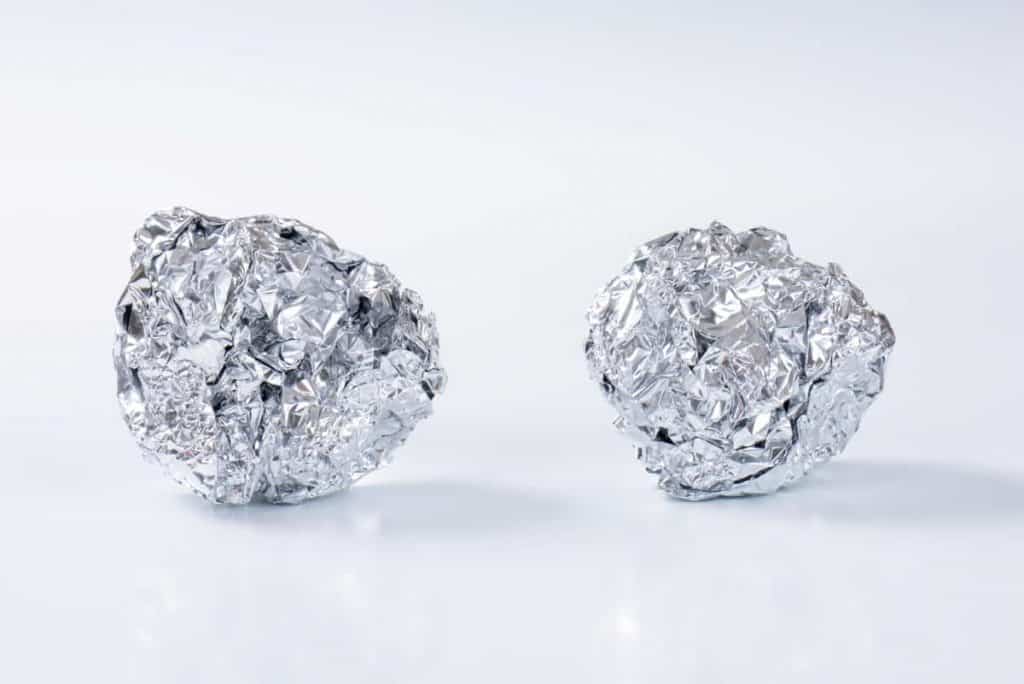
Is it safe to put aluminum foil in the dryer?
The greatest concern when using a dryer is the threat of a fire hazard. With aluminum foil, it’s very unlikely it will catch on fire in the dryer. It has a melting point of 1220 degrees Fahrenheit (660 degrees Celsius), which means it can withstand extremely high heat.²
According to the U.S. Fire Administration (USFA), the leading cause of home clothes dryer fires is failing to properly clean the lint trap, which results in 31 percent of dryer fires. Most fires occur in the cooler and drier fall and winter months with fires peaking in January.³
If you’re concerned about using metal foil in your dryer, it’s best to double-check your manufacturer’s owner manual.
Dryer tip: Clean your lint trap every time you use the dryer. This is by far the greatest fire hazard when it comes to dryers. Don’t forget to clean your dryer duct once a year, and the vent pipe every 3 months.³
What’s the difference between aluminum foil and tin foil?
Tin foil is the predecessor of aluminum foil. While many people use these two terms interchangeably, virtually all metal foil on the market today is aluminum foil.
In 1910, Robert Victor Neher received a patent for the “continuous rolling process” of aluminum foil and opened the first aluminum foil manufacturing plant in Switzerland.²
The pros and cons of using aluminum dryer balls
No solution is perfect. Here are a few benefits and downsides of using foil dryer balls.
Here are 4 reasons to put aluminum foil in the dryer
- No harsh chemicals: Unlike commercial dryer sheets which contain chemicals harmful to human health and the environment, aluminum foil is thankfully less toxic. Simple science (rather than harsh chemicals) allows this metal conductor to reduce static buildup in laundry loads.
- Budget-friendly: Dryer sheets can quickly add up. At a few cents per ball, aluminum dryer balls are easy on the wallet.
- Recyclable: Aluminum foil is fully recyclable (check your local recycling center for more details). Once you’re done, you can toss it into the recycle bin. Did you know that the recycling process for aluminium uses 95 percent less energy compared to manufacturing new foil?² That’s a great reason not to toss aluminum into the trash!
- Easy to make: Unlike other online hacks, this truly is a simple and easy solution. It only takes a minute or two to make your aluminum dryer balls, and each should last several months.
Cons of aluminum dryer balls
- A tad noisy: If you don’t mind the occasional clunk, clunk of metal dryer balls, this won’t be a problem.
- Doesn’t smell daisy-fresh: Sadly, your load of laundry won’t smell like a spring meadow.
- Abrasive: Aluminum foil can be abrasive when rubbed against clothing. I wouldn’t recommend using with clothing prone to snagging such as knitwear or delicates. Watch for any loose bits of foil that have come undone in the dryer!
- Doesn’t act as a fabric softener: These metallic dryer balls mostly just reduce static.
How to use metal foil balls in the dryer
Now that we know how aluminum reduces static electricity in your load of laundry, let’s look at a few tips on getting the most of this laundry hack.
- Make several foil balls: You need more than one. Most loads of laundry work well with two or three foil balls. This helps to reduce static evenly throughout all laundry items.
- Make them 3–4 inches wide: Make each aluminum foil ball roughly 3–4 inches (8–10 centimeters) in diameter.
- Roll them tight: It’s important to tightly squeeze the foil into a tight and smooth sphere. This prevents clothing from snagging.
- Keep synthetics and delicates out of the dryer: Synthetic fabrics (such as workout gear) tend to develop a lot of static in the dryer. It’s best to air dry these items. Also, avoid adding delicates to the dryer cycle in case the foil ball snags the fabric.
- Replace them periodically: Keep an eye on your DIY dryer balls and replace them every few months as needed.

The case against dryer sheets and fabric softener
In case you haven’t noticed, I’m not exactly a fan of commercial dryer sheets for a number of reasons.
Coated with chemicals, commercial dryer sheets leave a filmy residue on clothing, towels, and the inside of your dryer. With regular use, they can actually clog your dryer.
Over time, they make towels less absorbent. They make some clothing more flammable.
Plus, they are simply bad for you and the earth. According to the U.S. Environmental Working Group (EWG), you should actually just skip chemical dryer sheets altogether.⁴
They contain many chemicals linked to health and environmental concerns. Most dryer sheets and fabric softeners contain quaternary ammonium compounds (aka “quats”) which affect the reproductive system and may trigger asthma.
They also contain a host of synthetic fragrances, colorants, and preservatives. Each individual fragrance comprises dozens of unlisted chemicals, most of which we know very little about. Synthetic fragrances and dyes are skin irritants, and may affect those with asthma and eczema. A colorant called D&C violet 2 has links to cancer.⁴
Other natural alternatives to dryer sheets
If you’re looking for a way to cut down on chemicals in laundry, here are a couple of other easy and eco-friendly alternatives to traditional fabric softeners.
Wool dryer balls
I am a huge fan of wool dryer balls. I have been using them for years. I stopped using chemical dryer sheets years ago because my daughter has eczema. If you still crave fragrances in your laundry, you can add a few drops of your favorite essential oil to the dryer ball. Not only do wool dryer balls cut down on drying time, they leave clothes feeling soft and less static-y.
DIY reusable laundry sheets
Here’s an easy way to take advantage of a natural fabric softener: white distilled vinegar. Not only does vinegar keep towels soft and fluffy, it also gently disinfects and deodorizes.
To make your own reusable laundry sheets, cut a few squares of cotton fabric. Grab a sealable container.
In a small bowl or measuring cup, mix 1/2 cup white vinegar along with 8 drops of your favorite essential oil (lavender, tea tree, lemon, and orange are a few good choices). Place the fabric squares into the sealable container. Pour the solution over the fabric and mix. Keep sealed and use as needed.
The smell of vinegar dissipates, so no need to worry about smelling like vinegar!
Tennis balls
Breathe new life into old tennis balls by using them as a dryer ball. Using tennis balls as an alternative to dryer sheets is a great way to upcycle this item before it goes to the landfill.
Tennis balls are especially helpful when drying large items such as blankets and comforters as it helps to fluff them up.
Would you like more timeless tips via email?
Fun tips to help you live an independent, self-sustaining lifestyle. Opt-out at any time.


References
- Oakland University, Static Electricity, Lecture Notes, https://files.oakland.edu/users/rojo/web/p120/Readings/static_electricity.pdf. Accessed May 2022.
- European Aluminum Foil Association, Aluminium Foil: Characteristics and Properties, https://www.alufoil.org/en/about-alufoil/properties.html. Accessed May 2022.
- U.S. Fire Administration (USFA), Appliance and Electrical Fire Safety, https://www.usfa.fema.gov/prevention/home-fires/prevent-fires/appliance-and-electrical/. Accessed November 2023.
- Geller, Samara (05 May 2016). “Skip the Fabric Softeners,” U.S. Environmental Working Group (EWG). Accessed May 2022.

Author: Theresa Tesolin
Theresa is co-founder of RusticWise. She helps people unleash their inner DIY spirit by encouraging them to get dirty and make or grow something from scratch.

